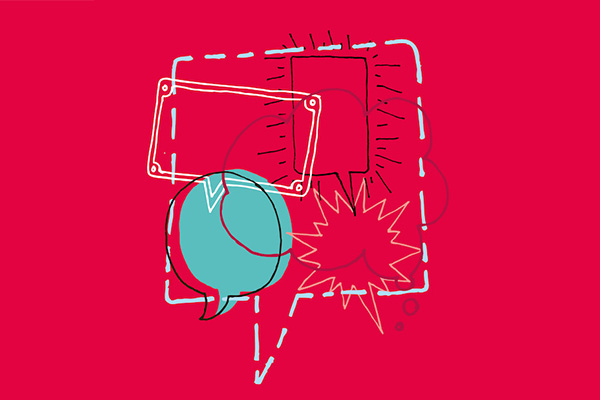My first meeting yesterday was with someone who thinks deeply about social cohesion.
He’s spoken to an array of former Prime Ministers and Home Secretaries about the challenge of bringing together, and holding together, an ever more diverse society. We talked about cohesion and integration and also the danger of hard Brexit with the pressure this might put on community relations. A thought emerged….
When it comes to the positive side of the cohesion story – essentially promoting understanding and integration – there are different views. In the face of the inevitable challenges that will be thrown up by growing diversity, some people argue for active social engineering; changing rules, reshaping institutions, embedding new norms. Others take a more laissez faire view; if people want to live or to study or to work differently or separately, that’s fine as long as they don’t infringe other people’s rights. I favour the former view, but the latter has validity and may be more realistic given the power of belonging in people’s lives.
I’m more certain about the negative side.
Speaking to the social psychologist and public intellectual Jonathan Haidt on a recent edition of the RSA podcast Polarised I asked him to compare 2018 with 1968. There is a great deal of talk right now about ‘the three Ps’ of polarisation, populism and pessimism. But watching Lynn Novick and Ken Burns’ brilliant history of the Vietnam War on Netflix I am reminded of how volatile things looked in 1968. As well as the radical protests in many European capitals, most notably the near coup in Paris, in the US was the year of the assassinations of Martin Luther King and Robert Kennedy, of the Democratic convention in Chicago turning into what was subsequently referred to as ‘a police riot’, of violent anti-war disturbances on campuses, ‘race riots’ in US cities, and even widespread home grown left wing terrorism.
Why do we feel so vulnerable now when – at least on the surface – divisions seemed more extreme then? Haidt’s suggests that while what he calls the ‘centrifugal’ forces pulling society apart in 1968 were stronger, so were the ‘centripetal’ forces holding society together. Among the latter was an integrated and largely responsible national media, lower levels of political partisanship in Washington, rising living standards and welfare provision, a shared recollection of the World War and pride in the progress made in the decades after. Despite everything, it was still possible to believe Martin Luther King when he asserted ‘the arc of the moral universe is long but it bends towards justice’.
In Britain our centrifugal forces are likely to remain strong. Social and spatial inequality, inter-generational resentment, the baleful impact of social media, more white British communities becoming minorities in their neighbourhoods and cities – these could all drive us apart. Then there are events; if a hard Brexit doesn’t get us the next economic downtown might, if climate change doesn’t disrupt our lives, technology surely will. In the coming decades those seeking to generate sectarianism and to blame others for collective pain will have plenty of opportunities to do their dirty work.
We need therefore to identify the institutions most able to hold us together and help us fight back. Many organisations, most notably Hope not Hate, focus on promoting cohesion but, however commendable their work, their capacity may be limited. Being both young and political their roots may be too shallow, their branches too short. Instead we need to look to established institutions which are diverse and inclusive but also have long standing, strong bonds capable of holding together when hate threatens to tear us apart. We need them to be ready to go on the front foot if things go wrong, not to obey the natural desire to retreat and put up the shutters.
Here are three examples:
Judging by the folk who go to Mass in Clapham Common on the occasions I drop in the Catholic Church in cities is incredibly diverse – everyone from nine day olds to ninety year olds, from homeless people to city bankers from newly arrived South Americans to third generation Irish families. Indeed, in many parts of the world the Catholic church is playing an honest broker role in sectarian conflicts.
McDonald’s has an incredibly diverse workforce and customer base including many people who have risen from serving burgers to running multi-million pound franchises. Most McDonald’s staff are from tough areas. They know when things are brewing up and from where the trouble is coming. A McDonald’s franchisee in South London has, for example, done some powerful work on knife crime in recognition of how often the assailants or victims are customers and how sometimes those threatened seek sanctuary in the restaurant.
West Bromwich Albion play their home football in a part of the country that has too often been a hotbed of racist politics. Yet nearly all Albion fans – munching on their half-time Balti pies - are deeply proud of their history as the first club to have three black first team players, a pride that was shown earlier this year in the outpouring of emotion following the death of one of those players, Cyrille Regis. If an institution was needed to counter an upsurge in sectarian conflict in the Black Country few would have the credibility of the fans of the Albion (and, come to that, of their neighbours in Wolverhampton).
Reflecting their nature and their social responsibilities all these organisations already carry out important positive work on inclusion. But they should be encouraged to go one step further; to work themselves and with others to prepare concretely for how to respond were a combination of adversity and extremism to drive the communities they serve towards conflict.
We all hope things will get better not worse: polarisation declines, we move positively into a more diverse future, society becomes more resilient. But there are at least as many reasons to believe that we will become more vulnerable to the voices of division.
As well as promoting all the virtues of diversity and inclusion, we also need to make sure some of our key social institutions are ready and willing to mobilise if things start to go wrong.
Related articles
-
Article: Connecting the dots
Matthew Parsfield
Building communities is not only intrinsically good; it can benefit the economy and public services too. Matthew Parsfield reflects on our 'Connected Communities' work.
-
Blog: The language of Pain
Steve Bodycomb
How language and art can be used to help diagnosis and treatment of medical conditions



Join the discussion
Comments
Please login to post a comment or reply
Don't have an account? Click here to register.
"....in many parts of the world the Catholic church is playing an honest broker role in sectarian conflicts".
There is no serious evidence of any such thing, is there?
Is there?
I think this is very nice and in general I agree with it, but: I dont exactly understand why these should be a two option thing that we have to choose one over the other: "some people argue for active social engineering; changing rules, reshaping institutions, embedding new norms. Others take a more laissez faire view; if people want to live or to study or to work differently or separately, that’s fine as long as they don’t infringe other people’s rights."
I think that these two should be blended (and we're doing something similar). Why not use social engineering in a laissez faire style for instance (or engineer socially for laissez faire) rather than having these two as mutually exclusive, "you cant have one if you have the other" sort of thing? Anything can be blended to achieve any outcome.
Likewise; rather than hoping that things will get for the better and condemning pessimism why dont we for instance use pessimism to foresee undesired outcomes and create a system which will produce the hope we all have been searching for - by eliminating the outcomes which make us hopeless and producing more outcomes which makes us hopeful?
I think these templates which are the product of such thinking dont work anymore in a world where these templates have somehow become a forcing-mechanism than solution-producers.